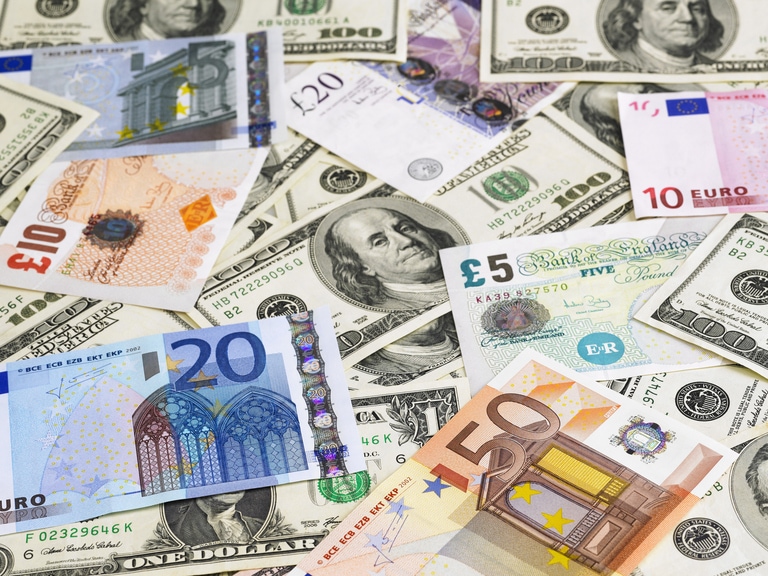Nvidia’s shares soared 25% amid its blown-out earnings reports, sparking a surge in chipmakers, with AMD’s shares up 10% and Taiwan Semiconductor Manufacturing’s stocks jumping 12%. The AI industry pioneer Microsoft also advanced 3.8%. The tech rally again defended economic woes on Wall Street, with Nasdaq gaining further to a 13-month high, while the Dow Jones Industrial index slid, dragged by energy and consumer stocks, reflecting the sluggish economic development.
Nonetheless, markets seem not to expect the Fed to become dovish as the 2-year bond yields jumped 18 basis points to the highest since 10 March. The US dollar index rose above 104 for the first time in more than two months. The second read of the US GDP was revised to 1.3% from the first estimate of 1.1%, while the jobless claims came to be less than the consensus. These economic data tend to strengthen market bets on the Fed’s “higher for longer” rate path.
Commodity markets, including metal and energy, were hit by a strong US dollar and China’s pessimistic economic outlook. But the decline in raw materials and crude oil may continue to cool inflation and balance the global supply and demand conditions.
Broad Asian markets are set for a mixed open, with ASX 200 futures down 0.08%, the Hang Seng Index futures down 0.89%, and Nikkei 225 up 0.78%.
Price movers:
- The S&P 500 finished higher but primarily buoyed by the technology sector, which jumped 4.45% amid an Nvidia-led rally. At the same time, 7 out of 11 sectors in the S&P 500 finished lower, with energy leading losses, down 1.89%. Defensive sectors, including utilities, healthcare, and consumer staples, also lost shine, down 1.38%, 1.04%, and 0.77%, respectively.
- Nvidia’s market cap approaches the US$1 trillion club after a 25% surge amid heating-up AI chip demands. The chipmaker’s market value jumped about US$195 billion to US$950 billion in one day following a blown-out earnings report, highlighting the explosive AI-powered tech bull’s euphoria in recent months. The stock’s P/E ratios climbed to 218, a relatively high level in growth stocks.
- The Chinese shopping platform, Meituan, returned to profit in the first quarter, reporting a 27% jump in revenue year on year. Its core commerce business more than doubled, with sales revenue rising to 58.6 billion yuan (US$8.3 billion), beating an estimated 57.5 billion yuan, thanks to strong consumer demands for meals, travel, and tickets after China lifted the strict Covid containment measures.
- USD/JPY jumped to above 140, the highest since November 2022 after the BOJ’s governor, Kazuo Ueda, said “We are not targeting wage growth itself”, defeating bets for a near-term policy change. Ueda indicated keeping the monetary policy flexible to support the sustainability of a 2% inflation target.
- Gold futures fell to the lowest in two months due to a strengthened USD and re-rampant bond yields. The precious metal may extend losses to a potential target of 1,900 from a technical perspective as the double-top pattern may have been formed.
- WTI futures snapped a three-day winning streak, down more than 3% after the Russian Deputy Prime Minister indicated that OPEC + was not expected to cut output further.
ASX and NZX announcements/news:
- Fisher & Paykel (ASX/NZX: FPH) reported FY23 revenue at $NZ1.58 billion, down 6% annually. Its net profit after tax declined 34% to $NZ250.3 million from a year ago. The guidance for FY23 is $NZ1.7 billion in revenue, split between hospital and homecare product groups.
Today’s agenda:
- Tokyo Core CPI for May.
- US Core PCE Price Index for April.






